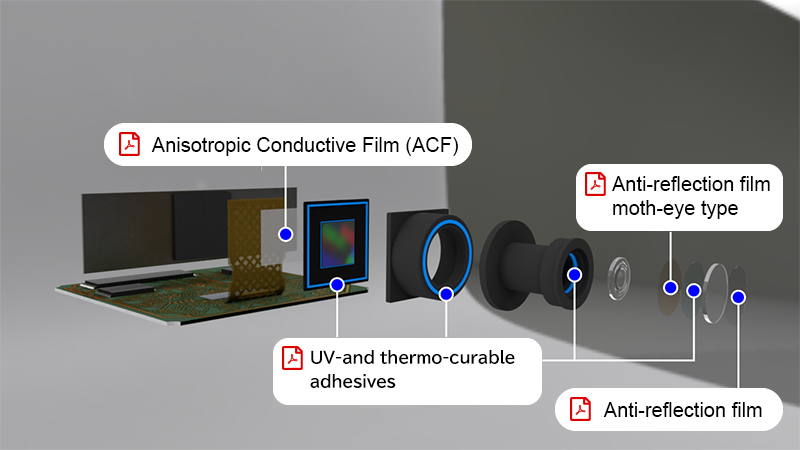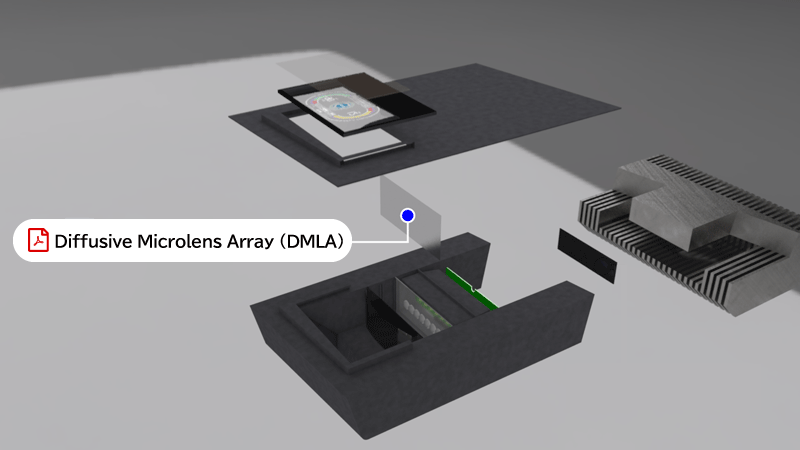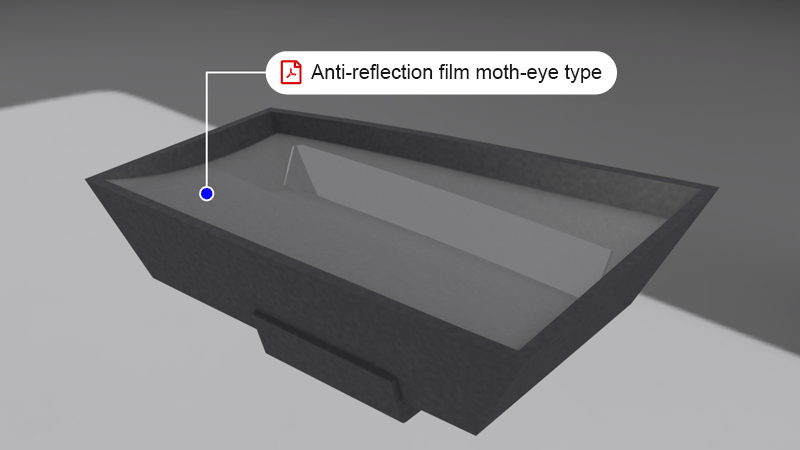CAMERA・SENSOR・HUD Cameras, Sensors, Head-up displays
Solutions for automotive cameras and sensors
As autonomous driving technology evolves, cameras, LiDAR, and other sensors are expected to play increasingly crucial roles. Dexerials recognizes that high sensing accuracy and reliable operations in harsh environmental conditions are key customer requirements. This section introduces products designed to meet these needs.
Optical solutions for Head-Up Displays (HUDs)
AR HUD (Augmented Reality Head-Up Display) technology is advancing due to ability to sense surronding information and alert drivers to potential hazards. As AR HUDs require wider viewing angle, demand for uniform brightness and efficient power consumption is increasing.
Dexerials developed the Diffusive Microlens Array for TFT LCDs, designed to replace conventional diffusive films by offering improved uniform brightness.
High-precision adhesives for camera and sensor components
Automotive camera modules are exposed to harsh extreme conditions such as vehicle vibrations, sunlight, and widely fluctuating temperatures. Dexerials leverages its expertise in polymers for smartphone camera applications to develop polymers for automotive camera modules.
Dexerials offers products suitable for various CMOS sensor alignment methods, including active alignment and lens barrel fixing. These products provide solutions for high-precision lens mounting, optical noise reduction, and stable operation. Additionally, Dexerials can deliver simulation and various testing services.
Enhanced sensing accuracy and reliability
in harsh enviromental conditions
Dexerials' hign-precision UV-curable resins are used in cameras for active alignment, bonding of lens to barrel, as well as bonding of module housing to substrates.
Dexerials' anti-reflection coatings for optical noise reduction and Anisotropic Conductive Film (ACF) for narrow-pitch connections are also applicable to camera modules and sensors.

Head-Up Displays (HUDs)
Head-Up Displays (HUDs) allow drivers to view vehicle information without shifting their gaze, thereby reducing driver distraction and increasing driver safety. The projected image must be bright enough to be visible at all times of the day while consuming minimal power.
Utilizing micro/nano-imprinting technology, Dexerials developed the Diffusive Microlens Array (DMLA), a diffusive film designed for HUDs. This film achieves uniform brightness of projected images.
Achieving uniform light distribution
The microlens array structure, designed for optimal light distribution, diffuses light into a top-hat shape. The top-hat light distribution reduces light loss, improves light utilization efficiency, and increases brightness compared to traditional diffusive films. Additionally, it facilitates adjustments to light intensity and enhances brightness uniformity.

Mitigating ghost image in HUDs
By applying a film that mimics the structure of a moth's eye to the internal side of a HUD’s glare trap, it is possible to achieve high anti-reflection properties and improved contrast.

